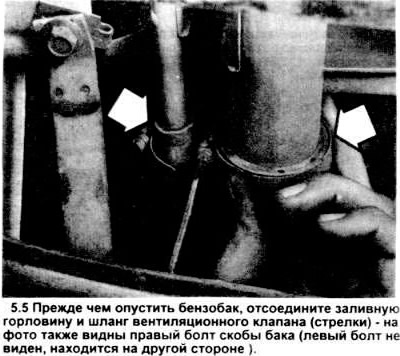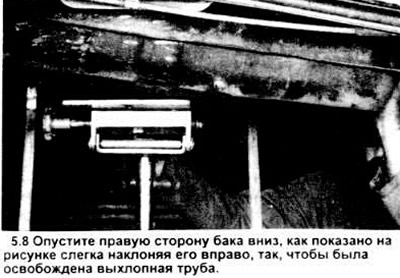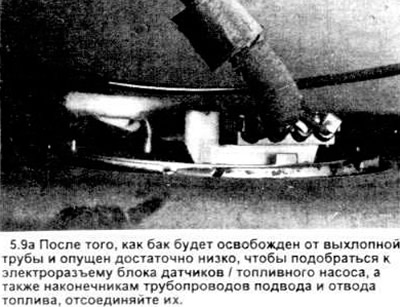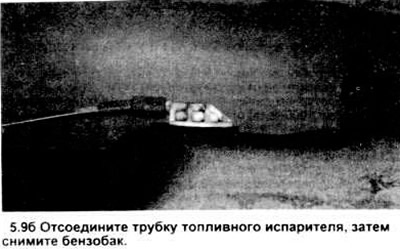Note: before starting work, the sensor must indicate that the tank is empty or almost empty. If you have to take a full tank (e.g. if the fuel pump is faulty), be sure to drain the remaining gasoline from the tank before starting work.
Warning: Gasoline is highly flammable, so care must be taken when working on any part of the fuel system. Do not smoke, open flames or uninsulated lamps may appear in the work area.
1. Relieve fuel pressure (see section 2).
2. Disconnect the wire from the negative battery terminal.
3. Raise the car, place it securely on stands.
4. If fuel remains in the tank, then. before removing it, the fuel must be drained. It is pumped out through a special tube to fill the tank. Moreover, a small diameter hose is required, since this special tube has a check valve that prevents fuel vapors from escaping when it is pumped out. Fuel-injected vehicles have additional reservoirs inside the tank that hold the fuel against the pump intake during sudden vehicle maneuvers or when the level is very low.
These tanks can prevent the hose from reaching the bottom of the tank. Therefore, the hose must be led into the tank several times.
5. Loosen the hose clamps connected to the tank filler hose and the tank vent valve hose (see picture), disconnect both hoses.

6. Place a floor jack under the tank, place a wooden spacer between the heel of the jack and the tank. Raise the jack until it can support the weight of the tank.
7. Unscrew bolts from back ends of tank brackets. These brackets are hung from the front end, so they can be brought forward and removed so as not to interfere.
8. Gently lower the tank, turning it slightly to the right, so that the approach to the exhaust pipe is free again (see picture). When you lower the gas tank so that you have access to the fuel lines, the evaporator tube and electrical connectors, leave it in this position.

9. Remove the electrical connector from the socket of the fuel pump power unit (see picture), disconnect the fuel supply system and return pipelines from the gas tank (return) (see section 3). Disconnect the evaporative fuel tube from the vapor outlet. After all connectors and tips are disconnected, remove the gas tank from the car.


10. To replace the gas tank, clean it and repair it, see the information in section 5; also on vehicles equipped with a carburetor, the sensor block must be removed, and on vehicles with fuel injection, the fuel pump/sensor block must be removed. For information on cleaning and repairing the gas tank, see section 6.
11. To install the sensor fuel pump assembly, see section 7.
12. Assembly is carried out in the reverse order.
Visitor comments